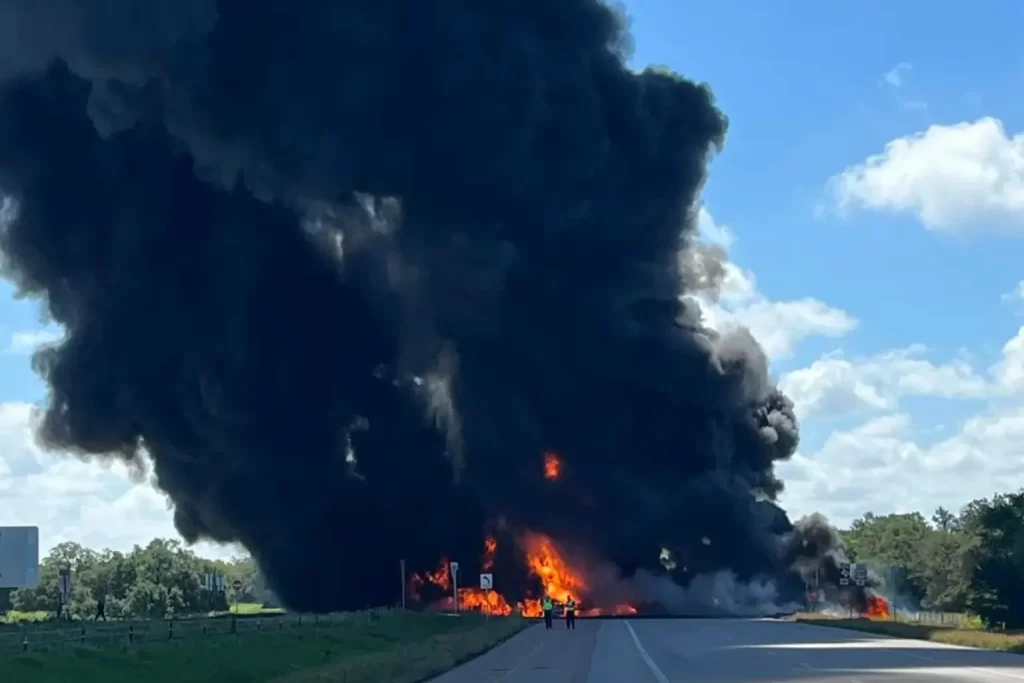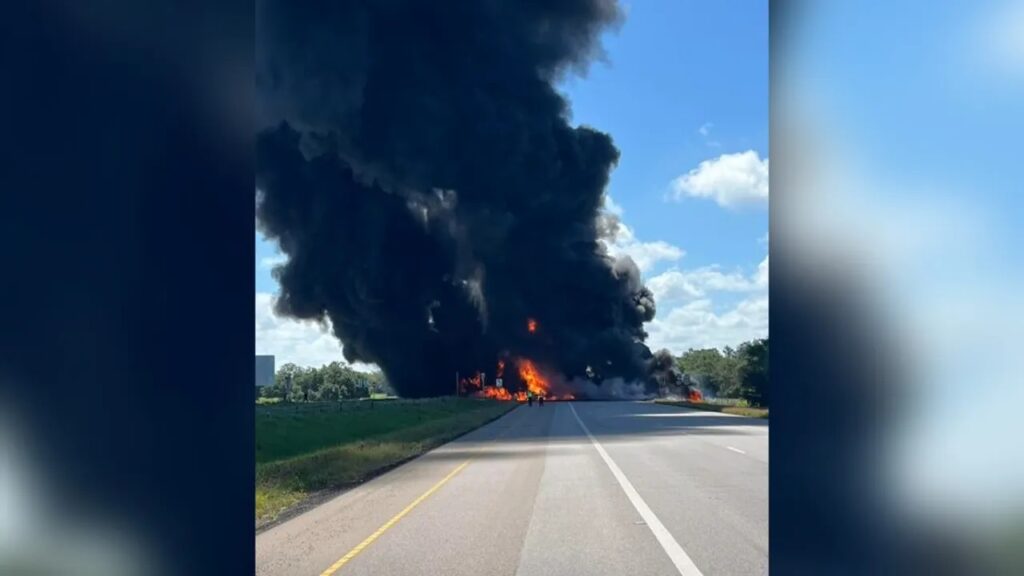A catastrophic tanker truck explosion on a busy Texas highway has left two people in critical condition and triggered a massive emergency response from multiple agencies. The incident, which occurred on Sunday afternoon, has highlighted the dangers of transporting hazardous materials and the critical importance of rapid, coordinated emergency response in such situations.
The explosion took place on US 290, a major highway east of Giddings, Texas, approximately an hour’s drive from the state capital of Austin. The force of the blast and the subsequent fire created a scene of chaos and destruction, prompting an immediate and comprehensive emergency response from local and state authorities.

Lee County Emergency Medical Services (EMS) were among the first responders on the scene, quickly assessing the situation and providing critical care to those injured in the blast. According to a statement posted on the Lee County EMS Facebook page, paramedics swiftly transported two critically injured patients to a hospital in Austin for urgent medical attention. The nature and extent of their injuries have not been disclosed, but their critical condition underscores the severity of the explosion.
The incident drew a coordinated response from numerous emergency services and law enforcement agencies. Fire departments from Giddings, Lincoln, and South Lee County rushed to the scene to combat the blaze and prevent further explosions. Their efforts were crucial in containing the fire and minimizing the risk of additional casualties or property damage.
Law enforcement presence was significant, with the Giddings Police Department and Lee County Sheriff’s Department working to secure the area and manage traffic flow around the accident site. The Texas Department of Public Safety also deployed personnel to assist with the emergency response and begin investigating the cause of the explosion.
In a display of regional cooperation, Fayette County EMS provided additional support, demonstrating the importance of mutual aid agreements in handling large-scale emergencies. This collaborative effort ensured that adequate resources were available to address all aspects of the incident, from firefighting and medical care to traffic control and investigative work.

The explosion has raised questions about the safety protocols surrounding the transportation of hazardous materials on public highways. As investigators work to determine the cause of the blast, there will likely be renewed discussions about regulations and best practices for tanker trucks carrying potentially dangerous cargo.
The incident has also had a significant impact on traffic in the area. US 290, a key transportation artery in central Texas, was closed in both directions following the explosion. This closure has caused considerable disruption to local and interstate travel, with authorities working to establish detours and manage the flow of vehicles around the affected area.
As clean-up efforts continue and investigators piece together the events leading up to the explosion, local residents and frequent users of US 290 are being advised to stay informed about road closures and potential hazards in the area. The long-term effects of the incident on the highway infrastructure and local environment will be assessed in the coming days and weeks.



